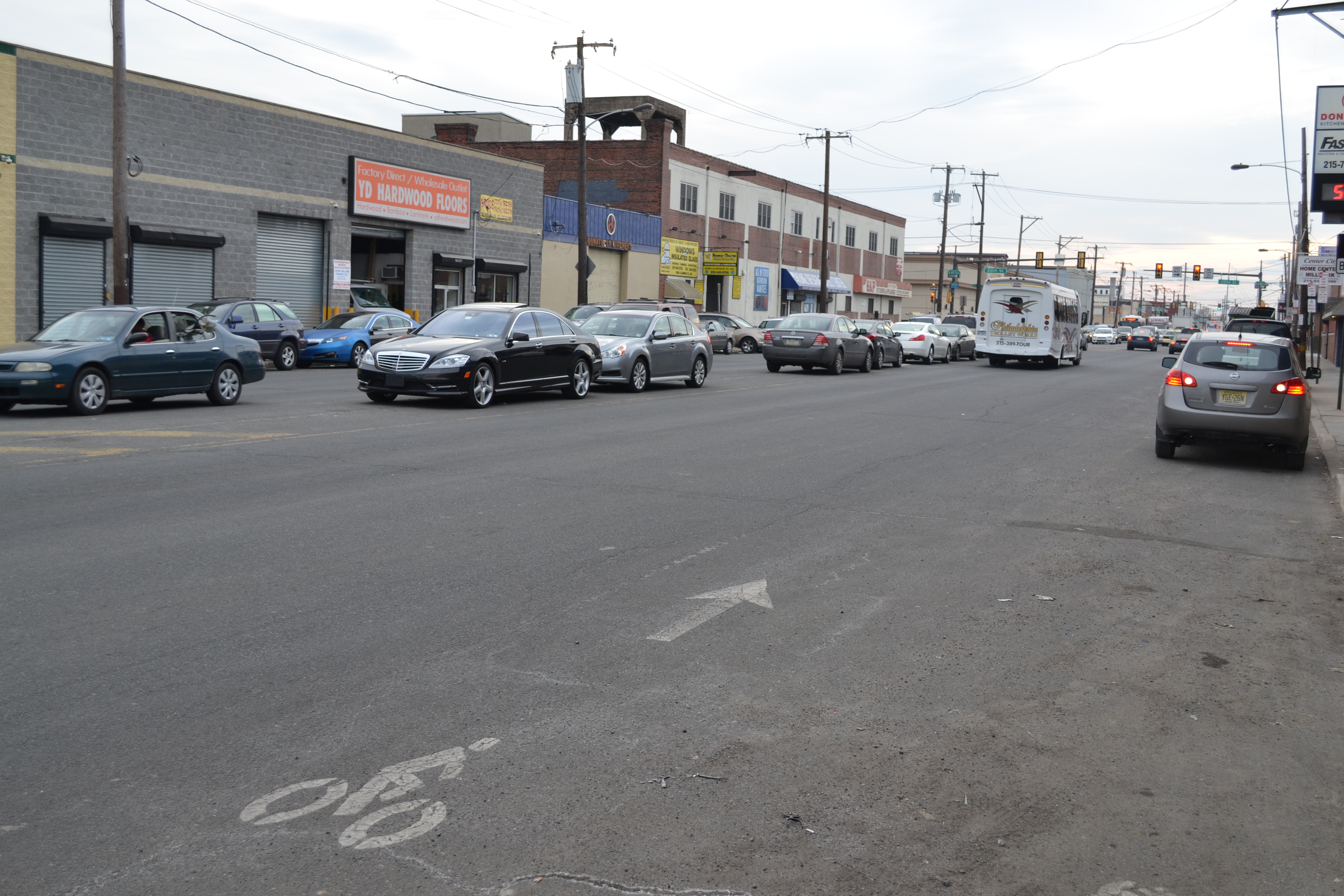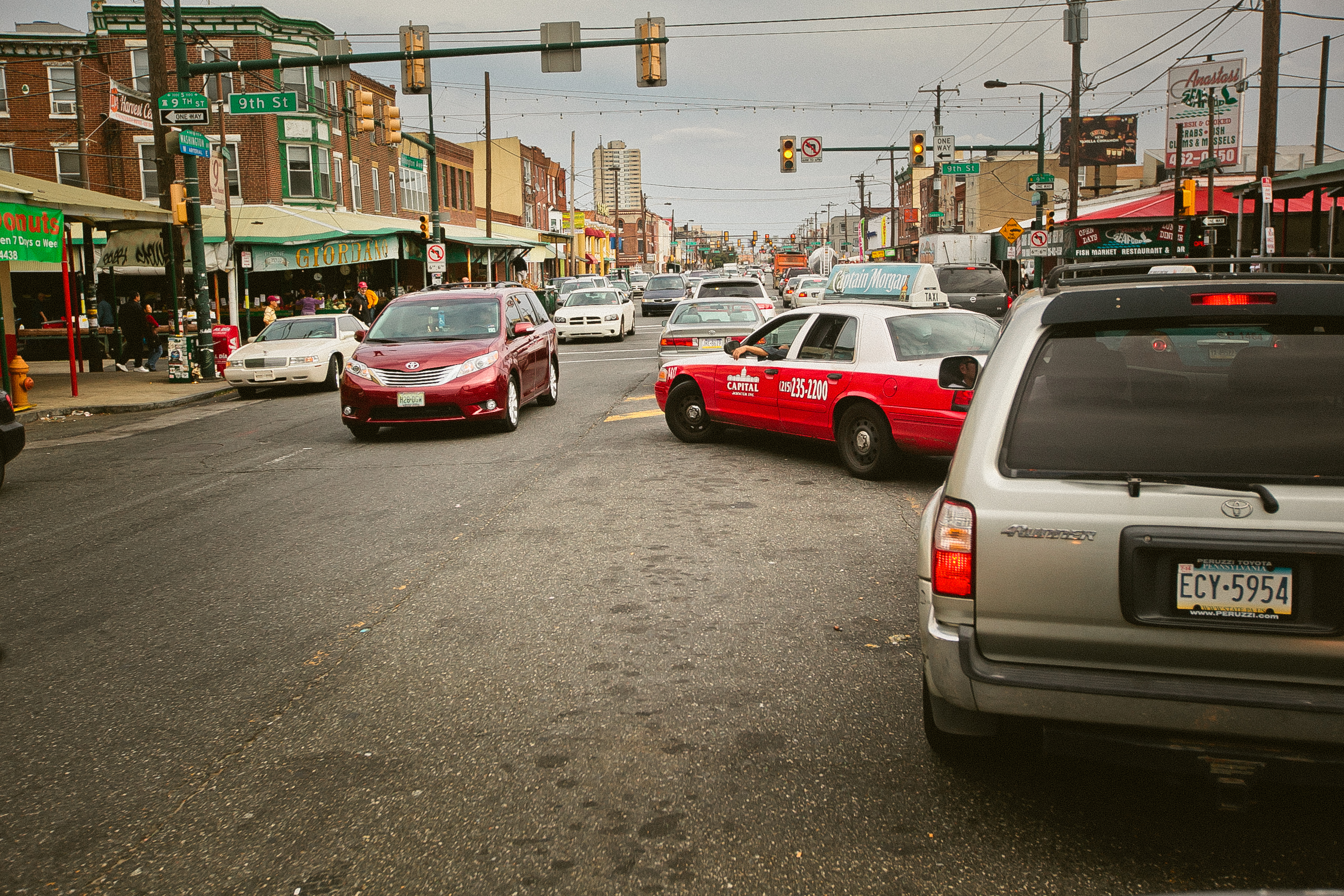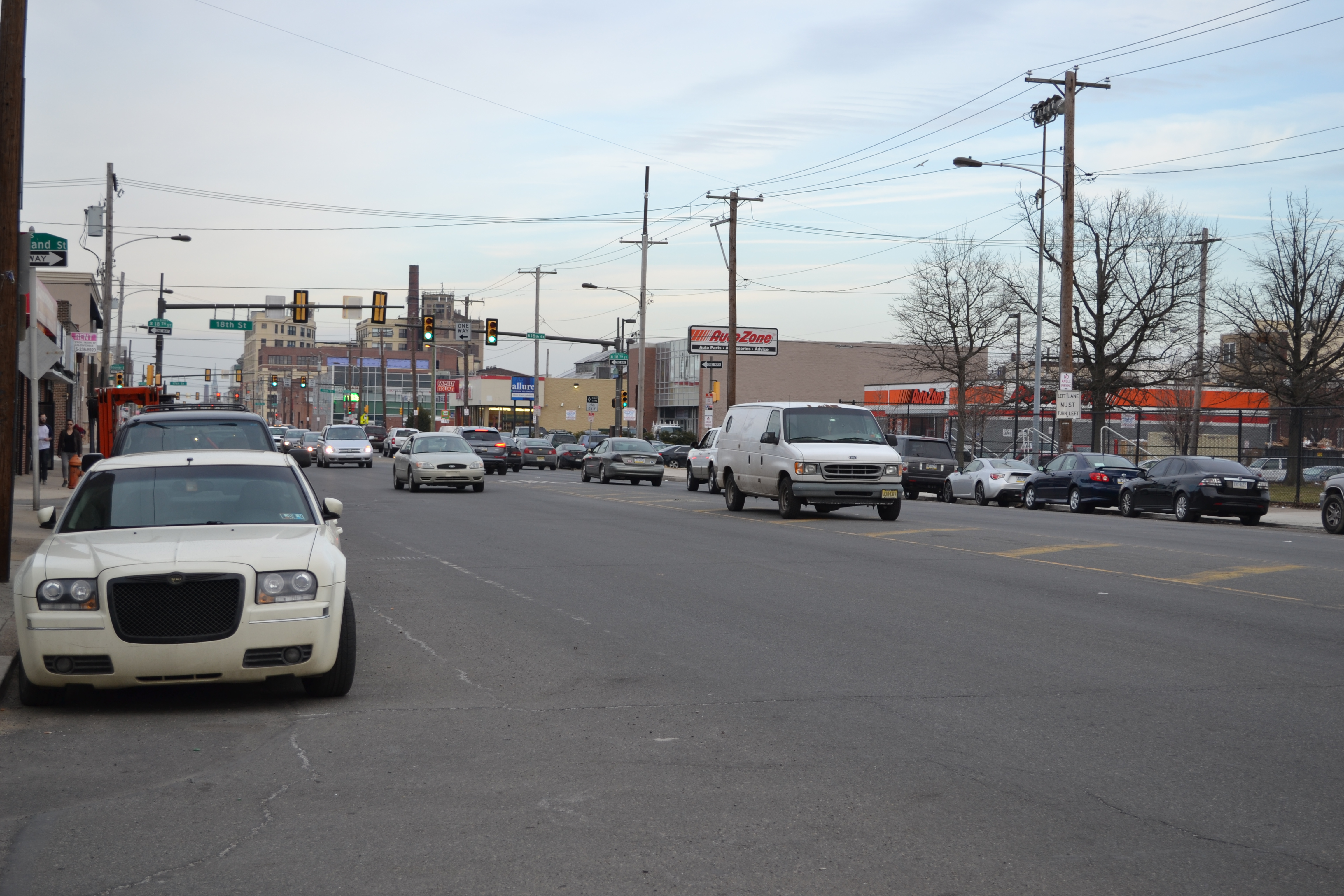Bike lanes, angle parking, realignment coming to Washington Avenue

Washington Avenue today is hectic. It’s a major east-west corridor. It sees heavy traffic from delivery trucks that load and unload in the street or on the sidewalks. Cars park in center turning lanes or on sidewalks. Pedestrians scramble across intersections, and the bicycle lanes, where they exist, are faded beyond recognition.
This could all change this summer, though, when the Philadelphia Streets Department repaints and, in the process, realigns Washington Ave.
From end to end, the road needs a fresh coat of paint, and the Philadelphia City Planning Commission (PCPC) has taken this opportunity to assess how changing the painted lines could improve conditions for drivers, cyclists and pedestrians alike. Since June, PCPC and consultants from Kittelson & Associates, Inc. and Boles, Smyth Associates, Inc. have been studying Washington Ave. They held a second and final public meeting yesterday.
“What this study is is a restriping plan,” said PCPC city planner Jeannette Brugger. It is not a treescaping, lighting or landscaping plan, she clarified.
The plan will alter traffic patterns though. The consultants and PCPC have nearly settled on a draft concept that boils down to “three lanes through most of the corridor, five lanes where we feel like the congestion keeps us from going narrower,” said Adam Vest of Kittelson & Associates, Inc.
For the majority of the roadway – from 25th to 16th streets and 12th to 5th streets – there will be one travel lane in each direction with a center turn lane and back-in angle parking.
In areas where traffic is heavier, Washington Ave. will remain two travel lanes in each direction with a center turning lane and parallel parking. Those sections are around Broad Street – between 16th and 13th streets – and around Columbus Avenue – between 4th Street and Columbus Avenue.
Bike Lanes, Crashes
In the last three years Washington Ave. has seen 915 crashes. Six crashes occur each week, and one pedestrian or bicyclist is injured every three weeks. A major goal of this road restriping project is to reduce those crash numbers.
“You probably won’t be surprised to know a lot of these are locations where there are no bike lanes,” Vest said.
As part of this project, bike lanes will be painted from end to end. The bike lanes will be positioned between the vehicle travel lanes and the parked cars. When PCPC and the consultants held a public meeting in November, there was talk of making buffered bike lanes or putting the bike lanes between the sidewalk and the parked cars, creating a cycle track.
Vest said the consultants chose not to create a cycle track because the curb juts out at each intersection. If there were a cycle track, bicyclists would have to maneuver around these bumpouts rather than travel in a relatively straight line. A cycle track or buffered bike lanes would have required a lot more room and a mix of angle parking and parallel parking on the same blocks. Instead, consultants chose non-buffered bike lanes.
“I know it sounds minimal, but just having paving markings out there and making sure they’re clean and fresh and people know what they’re doing is a start,” Vest said.
Some intersections will get bike boxes, which are intended to help bicyclists make left turns, and bike racks.
Loading zones
One major concern raised at Tuesday’s public meeting was how the project will impact loading zones and garages. The project team is considering creating loading zones with time parameters, licensed 24-hour loading zones or a mix of both.
Some businesses fear that, even if parking is restricted from a loading zone or garage entrance at certain times of day, vehicles may block those entrances anyway and disrupt business. When business owners at the public meeting asked if it would be easier to designate 24-hour loading zones during the planning process, rather than have businesses apply for a license later, Brugger said, “We’ll work with the specific business owners, but it’s likely you’ll still have to apply.”
Since the loading zone specifics are still being ironed out, it is unclear exactly how many additional parking spaces the restriping will create. At this point, the draft concept shows an additional 87 parking spaces, up from 634 to 721.
Timeline
Through April, PCPC and the consultants will work with stakeholders to finalize the Washington Ave. paint plans. The traffic lane alignments are fairly set in stone, but there is more wiggle room when it comes to just where the bike lanes will go or how the loading zones will be handled.
Sometime this summer the Streets Department will repaint the roadway and optimize traffic signals and pedestrian countdown timers. Once crews begin painting, the project should move relatively quick. Jack Smyth of Boles, Smyth Associates, Inc. said the painting itself will take a matter of weeks rather than a matter of months.
WHYY is your source for fact-based, in-depth journalism and information. As a nonprofit organization, we rely on financial support from readers like you. Please give today.







